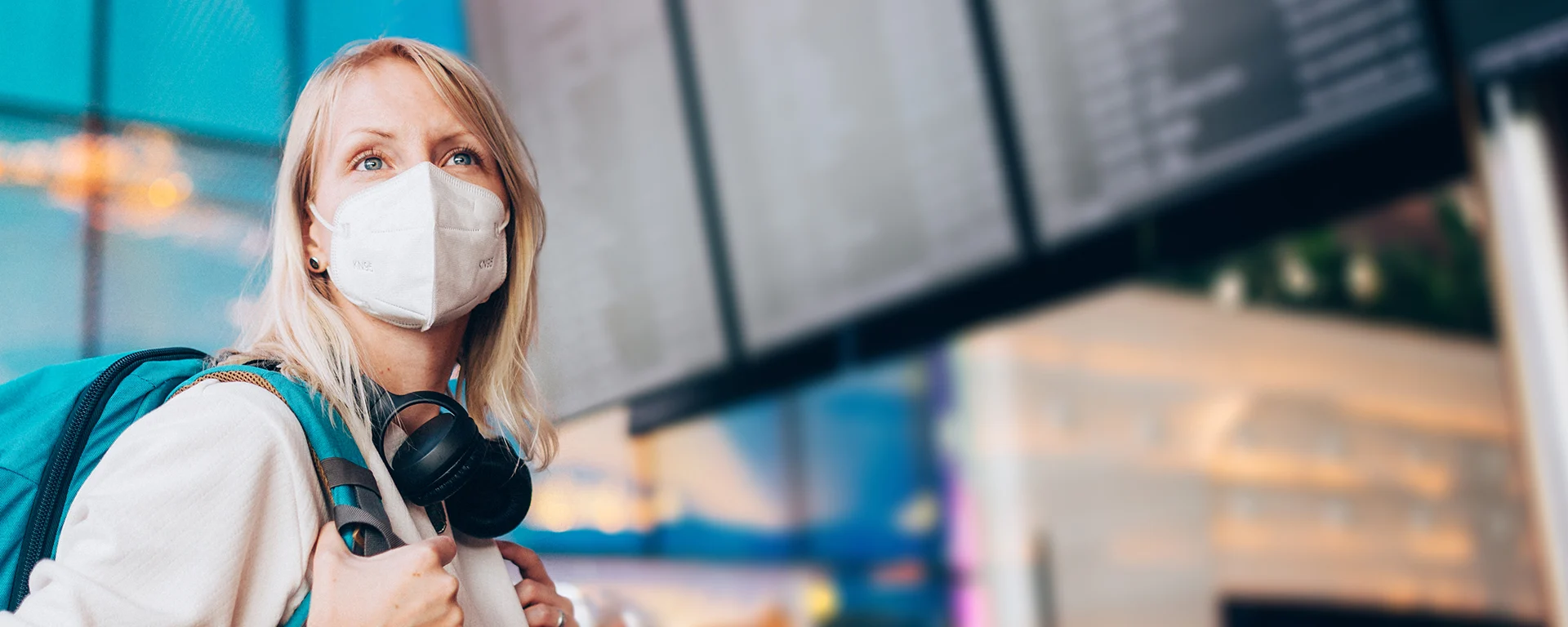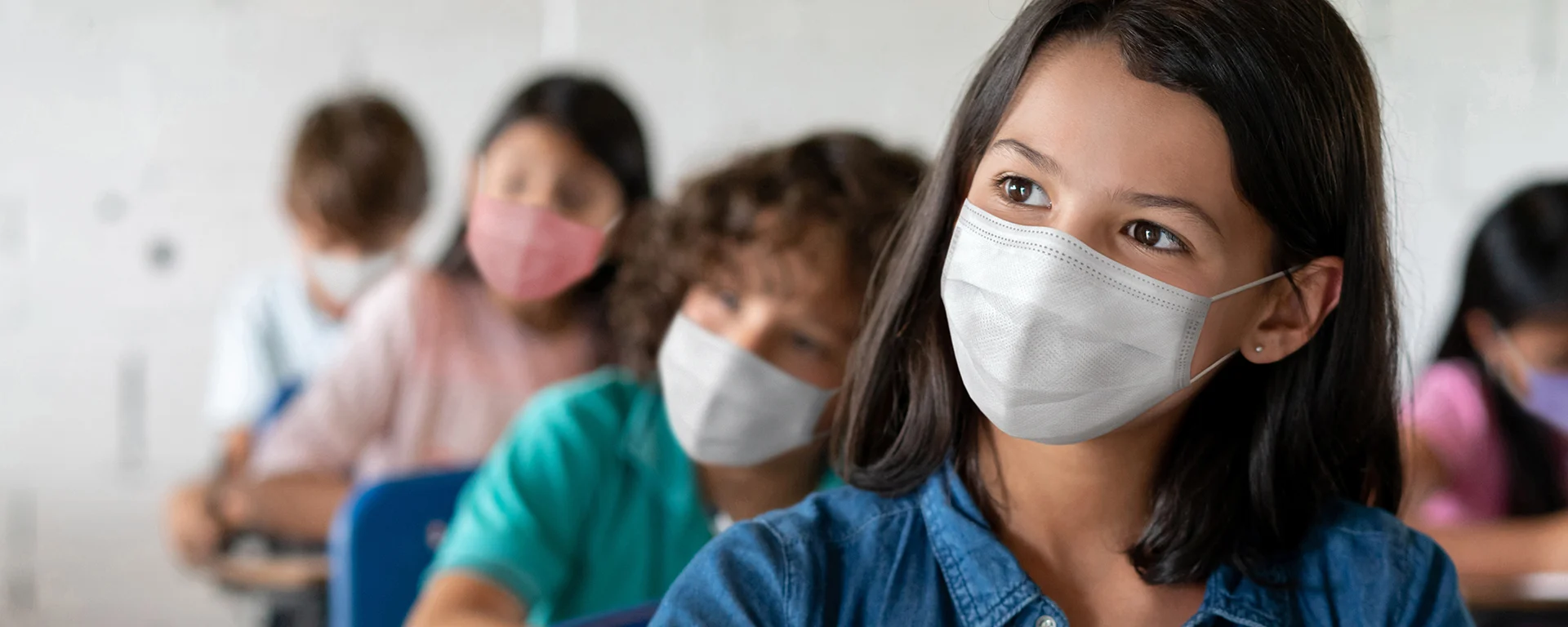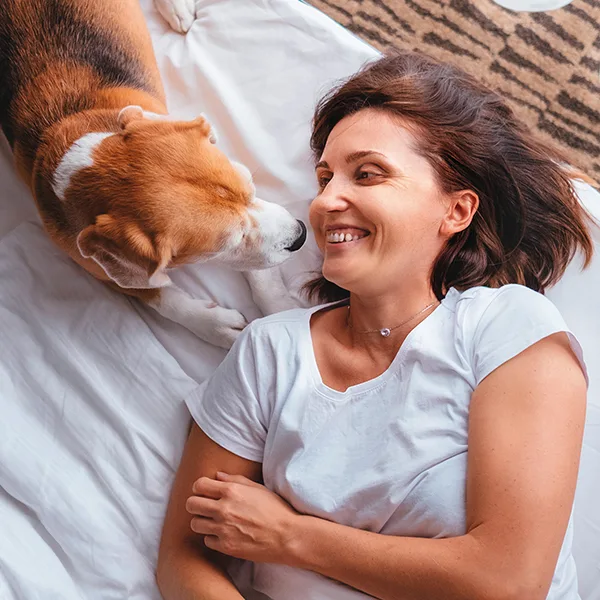Do the Two-Step
Ever wonder why most rapid tests for COVID-19 are sold in packs of two? There’s a critical reason for it — and if you don’t know what it is, you might end up making a big mistake.
December 2022: Whenever you test yourself for COVID at home — whether you’re positive or negative — you should report your result. The results are kept private and anonymous. Every test that gets reported helps public health teams better understand where outbreaks are happening, so they can get help to people who need it.
If you’ve ever been to a big-box store, you’ve seen a two-pack: bottles of lemon juice or all-purpose cleaner, packs of gum, boxes of cereal. So many things are sold in packs of two these days. So when at-home COVID tests started appearing in packs of two on pharmacy shelves — or in your mailbox, if you’ve already ordered free tests from the federal government — you probably didn’t even think twice about it. Or if you did, you probably assumed it was a marketing gimmick. Why sell one test when you can sell two?
Nope, it’s not about selling more product. Most rapid tests for COVID are sold in sets of two because of the way they’re supposed to be used. And if you don’t know how to use them correctly, you might end up with incorrect results.
The Antigen Test Dilemma
Most rapid tests for COVID are antigen tests. These tests give a positive result if enough proteins from the virus are in the sample (those proteins are called antigens). If there aren’t enough proteins in the sample, the test gives a negative result.
The problem is this: When you first get infected, you don’t have a lot of virus in your nose yet. If you take an antigen test at that point, your sample might not have enough protein to trigger the test, and you’ll get a negative result even though you’re infected. That can happen even if you have COVID symptoms.
Wait for it. . .
That’s where the second test comes in. If you look at the instructions for every antigen set sold in a two-pack, you’ll see that you’re supposed to test yourself not once, but twice: Once now, and once 48 hours later. Those hours are critical, because they give the virus time to multiply inside your body. (Some brands of test may say to wait 36 to 48 hours, but the FDA recommends waiting the full 48.) If you have COVID-19 symptoms but test negative the first time, by the time you test again, your sample should contain enough viral protein to trigger a positive result.
If you’ve been exposed to someone with COVID-19 but don’t have symptoms, there’s one additional catch. Depending on how long you wait before you test, you may need to wait another 48 hours and test a third time before you turn up positive. (Pro tip: Make sure you wait five full days after your exposure before you test the first time.)
Who ever heard of a two-step test?
What kind of weird test requires you to test twice? Doesn’t that just mean that the test isn’t very good?
Folks, here’s the unvarnished truth: There’s no such thing as a perfect test. An example: PCR tests, which look for pieces of the virus’s genetic material and are the “gold standard” for COVID tests. They’re done in a lab, which can be an issue in itself — results can sometimes take days to arrive. These tests are really sensitive, which means that if there’s even a tiny amount of viral RNA in your sample, those tests will pick it up.
But that can be a problem, too. Why? Because after you’ve had COVID, it takes a long time for your body to clean all the dead virus pieces out of your system. If you get tested at that point, having viral RNA in your nose doesn’t mean you’re contagious — or even still infected. How long does this problem last? PCR tests can turn up positive up to 90 days after you got COVID — even if you’re completely recovered. If you have COVID symptoms any time during those 90 days, a PCR test can’t tell if you’ve been reinfected or not.
When One Test Is Enough
There are two situations in which you might not need the second antigen test.
The first is kind of obvious: If you have COVID symptoms — or you were recently exposed to someone who has COVID - and you test positive on the first test. That result is almost certainly correct. (Important note! Nobody knows exactly how much virus you need to have inside you in order to make you contagious. So if you test positive on the first try, assume you have COVID and isolate for 5 - 10 days. If you take another test a day or two later and test negative, that doesn’t give you a “get out of jail free” card.)
The second situation is less clear-cut. If you have no symptoms, haven’t recently been exposed to anyone who’s tested positive, and have no reason to think you might be infected, you still might want to test yourself right before going to an unmasked social event. Especially if people who are at high risk of getting very sick from COVID will be there. In this situation, you’re testing to give yourself and your friends peace of mind - an extra layer of assurance that you won’t infect anyone else.
That being said, ideally you’d test twice in that situation, too — once a day or two before the event, and then again right before you attend. Because now you know why your at-home test is sold in a two-pack — and why knowing how a test works is a critical part of knowing how to use it effectively.






